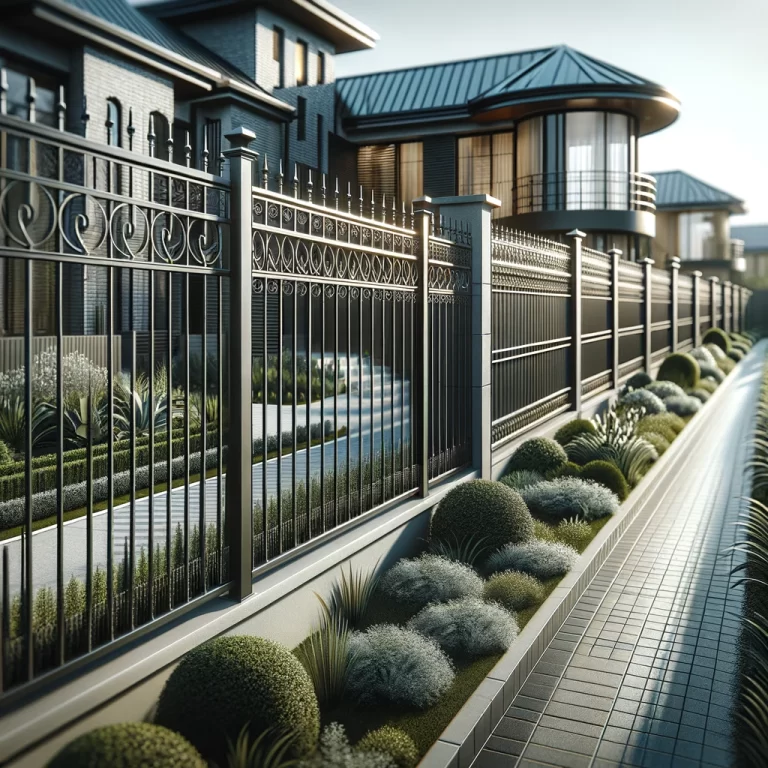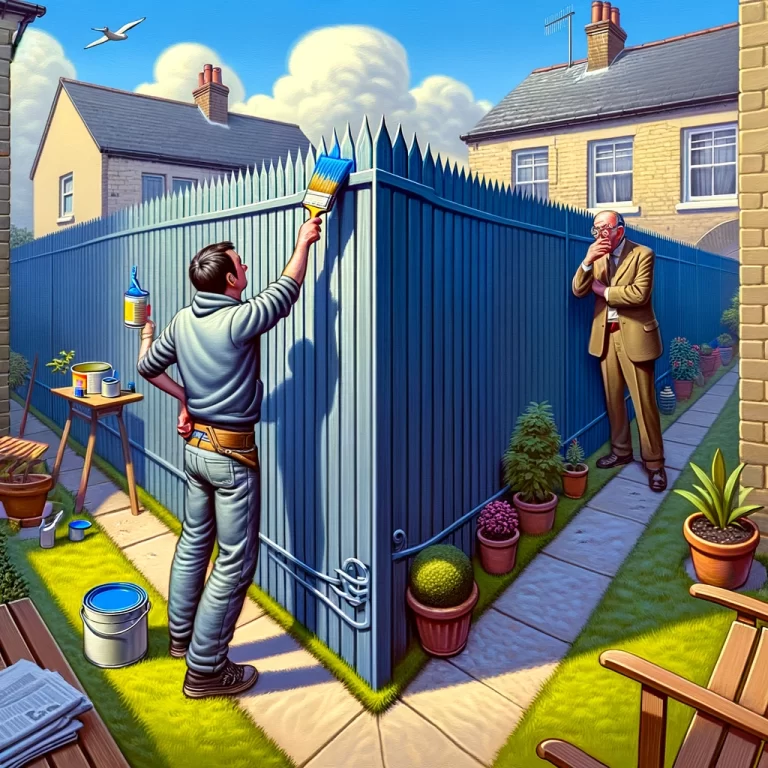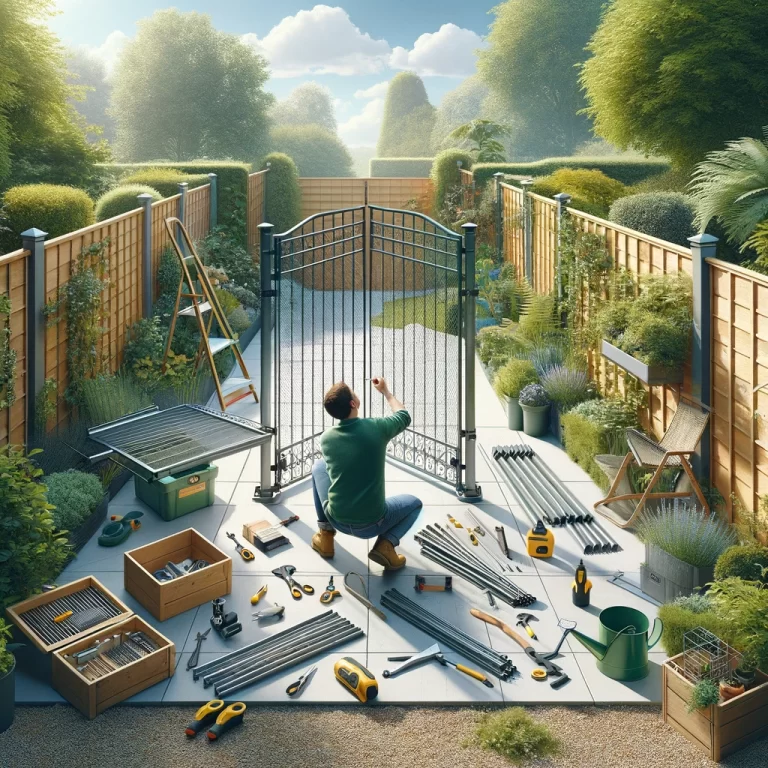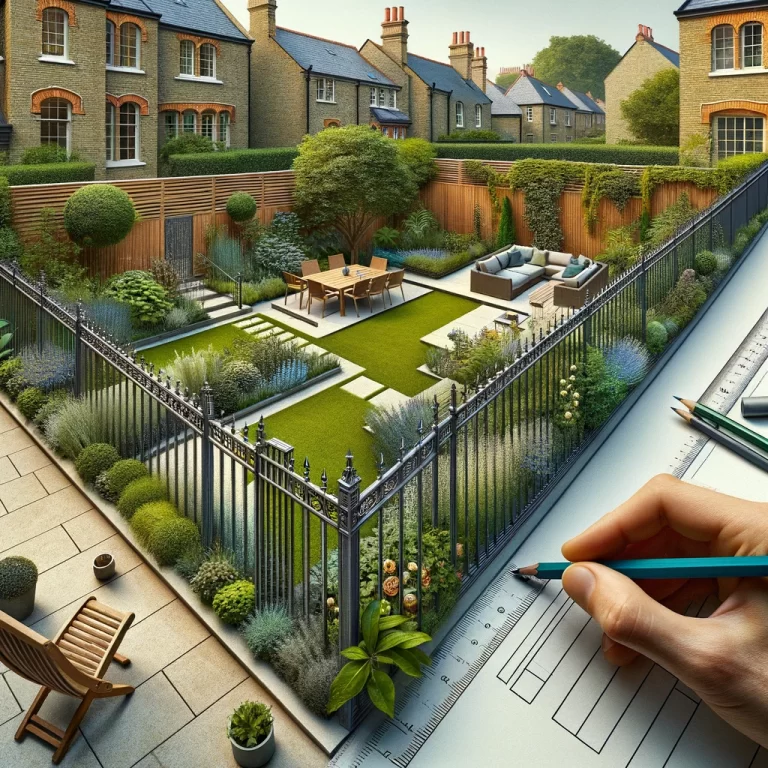Are you considering installing a metal fence on your property but unsure about the process and time involved? In this article, we will explore the different types of metal fences, the benefits of choosing metal over other materials, and the steps required for installation. We will also discuss the factors that affect the time it takes to put up a metal fence, whether you choose to tackle the project yourself or hire a professional. Let’s dive in and learn more about metal fences!
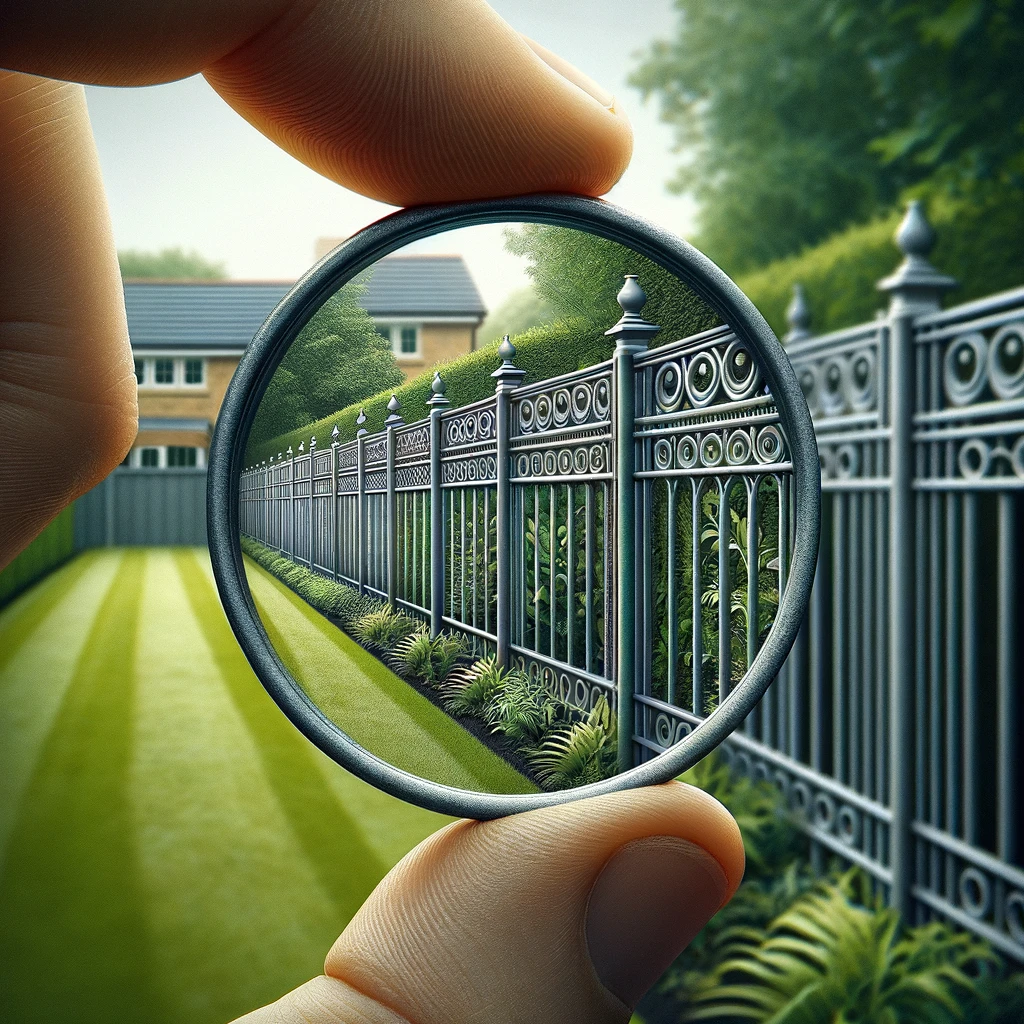
What Is a Metal Fence?
A metal fence is a type of barrier constructed from durable materials such as iron, aluminium, or steel to provide security and protection for properties.
These fences are commonly used in residential, commercial, and industrial settings to demarcate boundaries and enhance privacy. The materials used in constructing metal fences are chosen for their strength and weather resistance, ensuring longevity and minimal maintenance requirements. One of the key benefits of metal fences is their versatility in design, allowing for customisation to suit various styles and aesthetic preferences.
What Are the Different Types of Metal Fences?
Metal fences come in various types, including wrought iron, aluminium, steel, and chain link fences, each offering unique features and aesthetic appeal.
Wrought iron fences, known for their elegance and durability, are often chosen for their intricate designs and classical look.
On the other hand, aluminium fences are favoured for their lightweight nature, rust resistance, and low maintenance requirements.
Steel fences, prized for their strength and security, are commonly used in high-traffic areas or commercial properties.
Chain link fences, with their affordability and easy installation, are popular for enclosing large areas or securing pets and children in residential settings.
Wrought Iron Fence
A wrought iron fence adds a touch of elegance and security to any property, requiring a meticulous installation process that often involves traditional methods of crafting and assembling the fence panels.
During the installation of a wrought iron fence, skilled craftsmen carefully measure the dimensions of the property to ensure precise fitting of the fence panels. The intricate design elements, such as scrollwork and finials, are meticulously crafted to add aesthetic appeal to the fence. Customisation options allow homeowners to choose from various styles and finishes, from classic black to antique bronze, enhancing the overall look of the property. The labour-intensive task of assembling the fence involves welding together individual components to create a sturdy and durable structure that can withstand the test of time.
Aluminium Fence
An aluminium fence offers a lightweight and durable fencing solution that can be installed quickly and efficiently with a no-mess no-dig installation process, making it ideal for both residential and commercial properties.
One of the main benefits of opting for an aluminium fence is its versatility. These fences come in a variety of styles and colours, allowing you to choose the perfect design to complement your outdoor living space. Aluminium fences require minimal maintenance, saving you time and effort in the long run. Whether you have a modern urban yard or a sprawling countryside property, an aluminium fence can be tailored to suit your needs.
Steel Fence
A steel fence is a robust security solution that provides enhanced protection for properties, making it a popular choice for homeowners and business owners looking to safeguard their premises.
Known for its unparalleled durability, steel fences are designed to withstand harsh weather conditions and resist corrosion, ensuring a long-lasting security solution for any residential or commercial property. The strength of steel fencing acts as a strong deterrent to intruders, enhancing the overall security of the premises. Steel fences can be customised to fit any property size or design preference, offering a versatile solution for various applications.
Chain Link Fence
A chain link fence is a practical and cost-effective fencing option that typically involves traditional installation methods such as digging post holes and securing the chain-link fabric to the posts.
One of the key features of a chain link fence is its affordability, making it a popular choice for residential, commercial, and industrial properties. Apart from being cost-effective, these fences are known for their high visibility, allowing you to keep a clear view of your surroundings while maintaining security.
Installation of a chain link fence usually starts with marking out the fence line and digging holes for the posts, followed by securing the framework and attaching the chain-link fabric securely. Advancements in fencing technology have introduced mess-free installation techniques like pre-assembled panels, which simplify the process and reduce installation time significantly.
What Are the Benefits of Installing a Metal Fence?
Installing a metal fence offers numerous benefits, including exceptional durability, heightened security, minimal maintenance requirements, and aesthetic enhancement for properties.
- One of the standout advantages of metal fences is their unmatched longevity. Unlike other fence materials, such as wood or vinyl, metal fences are highly resistant to adverse weather conditions, rust, and pest infestations, ensuring they can withstand the test of time. In terms of security, metal fences provide a robust barrier that deters intruders and burglars, adding an extra layer of protection to your property.
- The visual appeal of metal fences is another notable feature. Whether you opt for sleek wrought iron designs or modern aluminium styles, metal fences can complement various architectural styles and landscaping aesthetics, seamlessly enhancing the overall look of your outdoor space.
- Maintaining a metal fence is a breeze. A simple occasional rinse and inspection are usually all that’s needed to keep a metal fence looking pristine. This ease of upkeep translates to long-term cost savings and peace of mind for homeowners looking to invest in a fence that offers both form and function.
Durability
The durability of a metal fence is unparalleled, providing long-lasting protection and security for properties in various environmental conditions.
One of the key factors contributing to the longevity of metal fences is their exceptional resistance to weather elements. Whether it’s enduring scorching heat, heavy rain, or even snowstorms, metal fences remain steadfast, maintaining their structural integrity. This resilience makes them a top choice for outdoor boundaries, as they offer reliable protection throughout the year.
- Corrosion is a common foe of many materials, but metal fences are designed to effectively combat it. The protective coatings and materials used in their construction create a barrier against corrosion, ensuring that the fence stays strong and robust over time.
Security
Metal fences offer unparalleled security features, deterring intruders and enhancing the safety of residential and commercial properties.
With their sturdy construction and imposing presence, metal fences act as a robust physical barrier, creating a clear boundary that discourages trespassing. The durability of these fences provides long-term protection against intrusion, resisting attempts to breach them. Their height and design options offer customisable levels of privacy, shielding properties from prying eyes and enhancing confidentiality. The visibility of metal fences assists in monitoring and surveillance, allowing for better control and detection of unauthorised access. When properly installed, these structures become integral security measures that significantly reduce the risk of security breaches.
Low Maintenance
Metal fences require minimal maintenance, reducing the need for frequent repairs or upkeep tasks, making them a convenient and cost-effective fencing option.
One of the key advantages of metal fences is their exceptional durability. Unlike other materials that may warp or degrade over time, metal fences can withstand harsh weather conditions and external pressures with ease. Their robust construction not only provides security but also ensures that they maintain their structural integrity for years to come.
Metal fences are highly resistant to rust and corrosion, which are common issues faced by many other types of fencing. This resistance to rust makes them a long-lasting solution that does not require constant upkeep or treatments to prevent deterioration.
The ease of care associated with metal fences is another appealing feature for homeowners. Simply occasional washing with soapy water and routine inspections for any signs of damage are usually sufficient to keep metal fences looking pristine and functioning optimally.
Aesthetics
Metal fences not only provide security but also enhance the visual appeal of properties, offering a wide range of design options to complement different architectural styles.
One of the key aesthetic benefits of metal fences lies in their decorative elements. These fences can be intricately designed with ornate patterns, finials, and scrollwork, adding a touch of elegance to any outdoor space. The customisation possibilities with metal fences are endless. Homeowners can choose from various metal types such as wrought iron, aluminum, or steel, and personalise their fence with unique colors, textures, and height options.
Aside from the security they provide, metal fences can dramatically enhance the curb appeal of a property. The sleek lines and modern look of metal fences can instantly elevate the overall appearance of any home or commercial building, boosting its aesthetic value in the neighborhood. Whether it’s a classic iron fence with a timeless charm or a contemporary aluminum design with clean, minimalist vibes, metal fences offer versatility to suit any style preference.
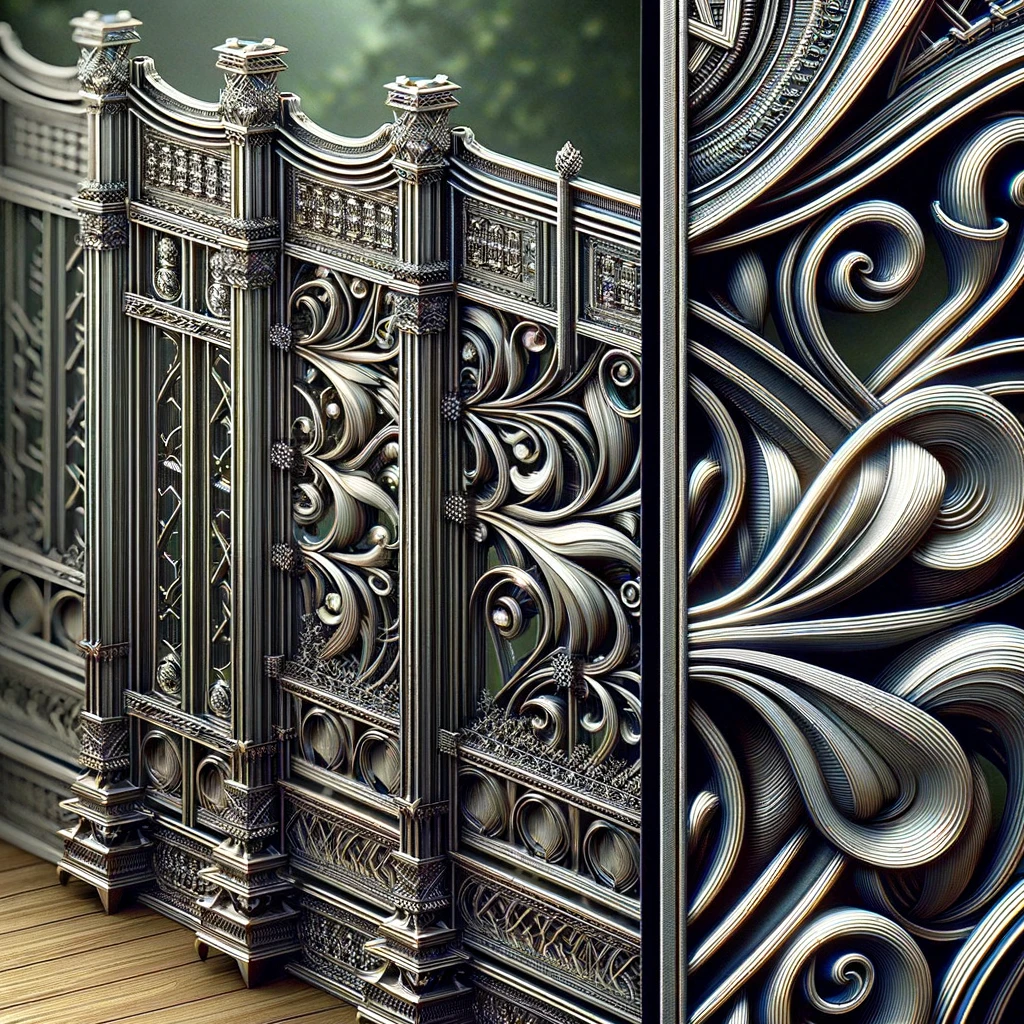
How Long Does It Take to Put Up a Metal Fence?
The time it takes to install a metal fence varies based on factors such as fence length, installation process, and the chosen type of metal fence, with most installations typically completed within a few days.
When considering the factors that affect installation time, the length of the fence plays a major role. Longer fences naturally require more time for installation due to the increased material and labour involved.
The installation process itself, including site preparation, digging post holes, setting up rails and panels, and adding finishing touches, can significantly impact the overall project timeframe.
Choosing the right type of metal fence is crucial as each type has its own complexities. For example, ornamental iron fences may take longer to install compared to chain-link fences due to their intricate designs and heavier components.
Factors That Affect Installation Time
Several factors can impact the installation time of a metal fence, including the size of the project, homeowner involvement, and the complexity of the terrain for business owners.
Regarding the scope of the project, larger properties naturally require more materials and labour, thus extending the timeline for completion.
Homeowner involvement plays a crucial role; prompt decision-making on design choices and necessary preparations can expedite the process.
The terrain’s complexity adds another layer of consideration; rocky or uneven landscapes might necessitate extra effort and specialised equipment, leading to potential delays that business owners should factor into their project timeline.
Average Time for Different Types of Metal Fences
The average installation time for different types of metal fences can range from a few days for aluminium fences to a week for wrought iron fences, depending on the complexity and size of the project.
Steel fences, being sturdy and durable, usually fall within the range of two to three weeks for installation due to their heavier construction and the need for specialised tools. On the other hand, aluminium fences are quicker to install because of their lighter weight and easier handling, making them a popular choice for those looking for a balance between durability and speed.
Wrought iron fences, with their intricate designs and artistic flair, might take longer to install, especially if customisation is involved, but the end result is often a timeless and elegant addition to any property.
DIY vs Hiring a Professional
Deciding between DIY installation and hiring a professional for a metal fence project can impact the timeline, with DIY projects potentially taking longer but offering cost savings in labour.
While opting for a DIY method can provide a sense of achievement and customisation to the project, it also requires careful planning and investment in tools and equipment. Professional installers, on the other hand, bring expertise, efficiency, and access to resources that can expedite the process and ensure high-quality results.
Factors such as terrain complexity, material selection, and local regulations play crucial roles in determining the best approach. DIY enthusiasts may enjoy the hands-on experience, but should be prepared for potential setbacks and learning curves.
What Are the Steps Involved in Installing a Metal Fence?
- Installing a metal fence involves several key steps, including planning and preparation, marking and measuring, digging holes, setting posts, installing panels or sections, and adding finishing touches to ensure a polished outcome.
Once the planning is complete, the next step is to mark the exact location where the fence will be installed, ensuring precision with each measurement taken. Then, it’s time to grab your tools and start digging holes for the posts. The depth of the holes should correspond to the height and weight of the fence to ensure stability. After the holes have been dug, carefully place each post, making sure they are aligned and level. Then, secure the posts in place with concrete to ensure sturdiness.
Planning and Preparation
The planning and preparation stage of a metal fence installation provides a comprehensive overview of the project, allowing for innovative methods to streamline the process and ensure successful outcomes.
During the initial site assessment, meticulous planning is vital to map out the terrain, identify any obstacles, and determine the most suitable layout for the metal fence. Material selection involves choosing durable metals like steel or aluminium that match the aesthetic preferences and the environmental conditions of the area. Considering innovative installation techniques can significantly reduce labour costs and improve efficiency.
By incorporating modern tools such as post drivers and levelling devices, the installation process can be more precise and time-effective. Proper planning also includes obtaining necessary permits and permission before commencing any work, ensuring a smooth process from start to finish.
Marking and Measuring
Accurate marking and precise measurements are essential components of the metal fence installation process, ensuring proper alignment and fit for different fence lengths and project sizes.
Regarding installing a metal fence, attention to detail is key. By carefully measuring and marking the areas where posts need to be placed, you set the foundation for a sturdy and visually appealing fence. Each inch matters, as the right measurements prevent gaps or uneven edges that could compromise the fence’s integrity. Precise markings help in accurately positioning gates, ensuring smooth functionality and easy access. Proper measurements lead to efficient material usage, avoiding wastage and unnecessary costs during the installation process.
Digging Holes and Setting Posts
Excavating holes and erecting posts are fundamental tasks in the installation of a metal fence, often necessitating conventional methods to secure the structural integrity of the fence.
When undertaking a metal fence installation project, the process of excavating holes and erecting posts is crucial to ensure that the fence endures the test of time. The stability and durability of the fence largely rely on the accuracy and attention given during this initial phase. Each hole must be excavated to the appropriate depth and width, enabling the post to be securely anchored in position.
The positioning of the posts is another crucial aspect that must not be ignored. Guaranteeing that the posts are evenly spaced and perfectly vertical is crucial for the overall aesthetics and functionality of the fence. Traditionally, fence installers adhere to specific guidelines and measurements to ensure that the fence not only looks attractive but also serves its purpose effectively.
Adhering to traditional installation techniques is more than a mere tip of the hat to the past; it is a commitment to preserving the structural integrity of the fence. By following tried-and-tested methods, such as backfilling the holes with concrete or gravel to offer additional stability, installers can prevent the posts from leaning or shifting over time.
Installing Panels or Sections
Installing panels or sections is a pivotal phase in the metal fence installation process, requiring precision and attention to detail to ensure a seamless integration within the garden or property.
Begin by selecting the appropriate panel design that complements the overall aesthetic of your property. Once you have the panels ready, ensure that the posts are accurately spaced to accommodate the panels. Utilise a spirit level to ensure the vertical alignment of the posts and panels, guaranteeing a uniform and visually appealing look.
After aligning the posts, carefully attach the panels, making sure they are level and secure. Take into account any sloping terrain by adjusting the panel installation to maintain a consistent height above the ground. This step is crucial in ensuring not only the rigidity of the fence but also its visual appeal.
Finishing Touches
Adding finishing touches to a metal fence installation involves refining details, applying protective coatings, and ensuring the overall aesthetic appeal of the completed project for residential and commercial properties.
These final touches not only serve an aesthetic purpose but also play a crucial role in ensuring the longevity and durability of the fence. By meticulously examining each weld, ensuring proper alignment, and applying a corrosion-resistant finish, the installation reaches its peak functionality. These finishing touches enhance the overall visual appeal of the property, giving it a polished and cohesive look.


